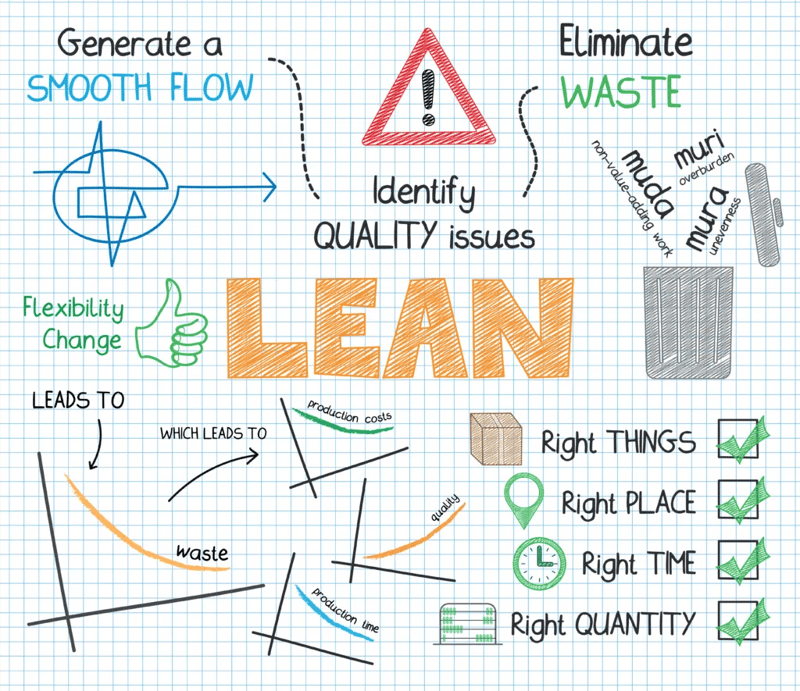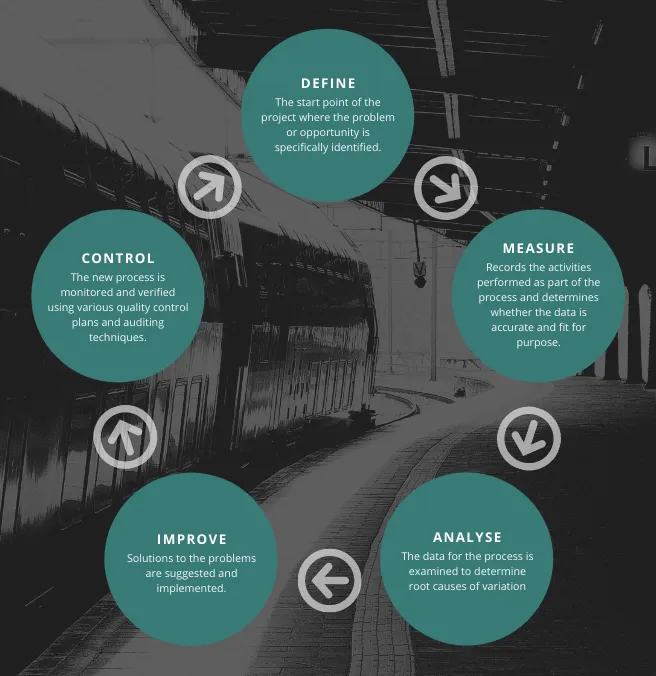How to identify Lean Six Sigma projects
Simply, Lean means creating more value for customers with fewer resources.
A Lean Organisation understands customer value and focuses its key processes to continuously increase it. The goal is to provide perfect value to the customer through a perfect value creation process that has zero waste.
Six Sigma is a disciplined, data-driven approach and methodology for eliminating defects (driving toward six standard deviations between the mean and the nearest specification limit).
Overall, Lean Six Sigma is a methodology designed to significantly improve business strategies and workflows. The primary goal of Lean Six Sigma is to eliminate defects in a process. The desired outcome is improved quality and efficiency for the business. This overall result is achieved by streamlining business processes and eliminating wasted effort and resources.
Project Selection
Improvement project selection with whole organisational benefit is often lacking in organisations but it is important that improvements are constantly implemented. After all, the survival of an organisation can depend upon how well these improvement projects are chosen and executed. Selecting the right project is a critical component of project success. If putting enough effort into selecting the right opportunity for improvement is lacking, a project can end in disaster, or create unnecessary work and complexity for the project team.
Without a well-defined strategy, pinpointing a Lean Six Sigma project can be a complex process. Therefore, a clear, long-lasting mechanism for project selection is needed. This is so that the business benefits and silo-only-benefited projects are avoided. A methodology is needed where enterprise-wide measurement improvement needs “pull” for projects that will enhance key performance indicators (KPIs), and owners of these metrics are asking for timely project completions. So, how can the integrity and direction of such a system be created and maintained through the frequent leadership and organisational changes that often occur?

Planning
Many organisations improve processes through certain plans or strategies and it is important to understand the methodology that your organisation uses. There needs to be a planning period in which goals are aligned, established and agreed upon. A mission statement needs to be created alongside a business model by the senior management team. Then a performance assessment of the organisation is to be conducted which will outline strengths and areas for key improvements. Lean Six Sigma projects will naturally become evident at this point. However, the right projects in sequence still need to be considered and aligning with organisational strategic direction remains important.
A gap analysis study show’s the distance between where your organisation’s current performance is at and where it aspires to be. Then, create your strategic action plan and communicate it throughout the organisation. This will determine the strategic direction and create buy-in at all levels. Lean Six Sigma is designed to bridge the gaps discovered in the gap analysis study. It can supplement the action plan phase of a strategic planning process. Once the plan is in place, figure out how Lean Six Sigma aligns with your organisation’s goals, aspirations and plans of action. If business modelling is a part of your organisation’s strategic planning process, it can tell you a great deal about where the business stands in terms of market growth and competitive positioning. Once you’re confident of your organisation’s standing within its market, you can combine the action plan to the main goals that will most benefit the organisation. This is called policy deployment. It involves setting goals that are high level and functional, then integrating those goals into Lean Six Sigma projects for individuals and teams to conduct.
Process
The next focus is to look at organisational processes. Every organisation has levels of different processes. At the highest level, an organisation is about creating products, information or services that are coveted by some form of consumer base. This can be defined as the core business process. Underneath that, however, are more intricate processes. Processes that require a specific sequence of steps and actions to keep the core organisational processes working efficiently. It is these underlying, intricate series of processes where Lean Six Sigma can action its most relevant work. Nevertheless, it won’t be optimally effective if an organisation does not understand its core business processes first. It’s therefore imperative that core business processes are fully understood, reviewed and audited regularly for effectiveness. KPIs will also help to identify any main issues here and then Lean Six Sigma projects can be applied to be proactive to process issues as they occur. This will maintain competitive advantage for the organisation. In a nutshell the Lean Six Sigma project teams are focused on real-world problems that are impacting customers and processes right now.
The journey
Finally, once a Lean Six Sigma project is underway, it can significantly boost efficiency and goal achievement in any organisation. Lean Six Sigma is a journey; however, along the way, an organisation will begin to experience transformation & excellence. After completing several rounds of projects in multiple critical & non-critical functions, the newly developed organisational culture will help management to develop empowered employees to identify and drive improvement ideas naturally as they occur.
Share this
You May Also Like
These Related Stories

Understanding the Lean Six Sigma Belts

What is Lean Six Sigma?


No Comments Yet
Let us know what you think